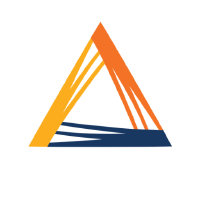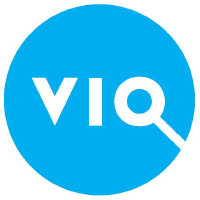Aura Minerals Inc
TSX:ORA

| US |

|
Johnson & Johnson
NYSE:JNJ
|
Pharmaceuticals
|
| US |

|
Berkshire Hathaway Inc
NYSE:BRK.A
|
Financial Services
|
| US |

|
Bank of America Corp
NYSE:BAC
|
Banking
|
| US |

|
Mastercard Inc
NYSE:MA
|
Technology
|
| US |

|
UnitedHealth Group Inc
NYSE:UNH
|
Health Care
|
| US |

|
Exxon Mobil Corp
NYSE:XOM
|
Energy
|
| US |

|
Pfizer Inc
NYSE:PFE
|
Pharmaceuticals
|
| US |

|
Palantir Technologies Inc
NYSE:PLTR
|
Technology
|
| US |

|
Nike Inc
NYSE:NKE
|
Textiles, Apparel & Luxury Goods
|
| US |

|
Visa Inc
NYSE:V
|
Technology
|
| CN |

|
Alibaba Group Holding Ltd
NYSE:BABA
|
Retail
|
| US |

|
JPMorgan Chase & Co
NYSE:JPM
|
Banking
|
| US |

|
Coca-Cola Co
NYSE:KO
|
Beverages
|
| US |

|
Walmart Inc
NYSE:WMT
|
Retail
|
| US |

|
Verizon Communications Inc
NYSE:VZ
|
Telecommunication
|
| US |

|
Chevron Corp
NYSE:CVX
|
Energy
|
Utilize notes to systematically review your investment decisions. By reflecting on past outcomes, you can discern effective strategies and identify those that underperformed. This continuous feedback loop enables you to adapt and refine your approach, optimizing for future success.
Each note serves as a learning point, offering insights into your decision-making processes. Over time, you'll accumulate a personalized database of knowledge, enhancing your ability to make informed decisions quickly and effectively.
With a comprehensive record of your investment history at your fingertips, you can compare current opportunities against past experiences. This not only bolsters your confidence but also ensures that each decision is grounded in a well-documented rationale.
Do you really want to delete this note?
This action cannot be undone.

| 52 Week Range |
15.8013
48.52
|
| Price Target |
|
We'll email you a reminder when the closing price reaches CAD.
Choose the stock you wish to monitor with a price alert.

|
Johnson & Johnson
NYSE:JNJ
|
US |

|
Berkshire Hathaway Inc
NYSE:BRK.A
|
US |

|
Bank of America Corp
NYSE:BAC
|
US |

|
Mastercard Inc
NYSE:MA
|
US |

|
UnitedHealth Group Inc
NYSE:UNH
|
US |

|
Exxon Mobil Corp
NYSE:XOM
|
US |

|
Pfizer Inc
NYSE:PFE
|
US |

|
Palantir Technologies Inc
NYSE:PLTR
|
US |

|
Nike Inc
NYSE:NKE
|
US |

|
Visa Inc
NYSE:V
|
US |

|
Alibaba Group Holding Ltd
NYSE:BABA
|
CN |

|
JPMorgan Chase & Co
NYSE:JPM
|
US |

|
Coca-Cola Co
NYSE:KO
|
US |

|
Walmart Inc
NYSE:WMT
|
US |

|
Verizon Communications Inc
NYSE:VZ
|
US |

|
Chevron Corp
NYSE:CVX
|
US |
This alert will be permanently deleted.
Aura Minerals Inc
Aura Minerals, Inc. engages in the exploration, development, and operation of gold and base metal projects in the Americas. The company is headquartered in Miami, Florida. The company went IPO on 2007-07-31. The firm focuses on the development and operation of gold and base metal projects in the Americas. The Company’s producing assets include the San Andres Mine, the Ernesto/Pau-a Pique Project, the Aranzazu and the Gold Road Mine. The San Andres Mine is located approximately 360 kilometers from Honduras’ capital of Tegucigalpa in the western highlands of the country. The Ernesto/Pau-a-Pique Project is located in Mato Grosso, Brazil, approximately 450 km west of Cuiab, the state capital and 12 kilometers from the town of Pontes e Lacerda. The Aranzazu is an underground gold, silver and copper mine located in Zacatecas, Mexico approximately 800 kilometers from Mexico City. The Gold Road Mine is an underground gold mine located in the historical Oatman mining district of northern Arizona. The company also has two additional gold projects in Brazil, Almas and Matupa, and one gold project in Colombia, Tolda Fria.
Aura Minerals, Inc. engages in the exploration, development, and operation of gold and base metal projects in the Americas. The company is headquartered in Miami, Florida. The company went IPO on 2007-07-31. The firm focuses on the development and operation of gold and base metal projects in the Americas. The Company’s producing assets include the San Andres Mine, the Ernesto/Pau-a Pique Project, the Aranzazu and the Gold Road Mine. The San Andres Mine is located approximately 360 kilometers from Honduras’ capital of Tegucigalpa in the western highlands of the country. The Ernesto/Pau-a-Pique Project is located in Mato Grosso, Brazil, approximately 450 km west of Cuiab, the state capital and 12 kilometers from the town of Pontes e Lacerda. The Aranzazu is an underground gold, silver and copper mine located in Zacatecas, Mexico approximately 800 kilometers from Mexico City. The Gold Road Mine is an underground gold mine located in the historical Oatman mining district of northern Arizona. The company also has two additional gold projects in Brazil, Almas and Matupa, and one gold project in Colombia, Tolda Fria.
Record EBITDA: Aura delivered its fourth consecutive quarter of record EBITDA, reaching $106 million in Q2, boosted by higher production and gold prices.
Stable Costs: All-in sustaining cash cost was $1,449 per ounce, remaining stable and at the low end of guidance despite inflationary pressures.
Production Growth: Q2 production hit 64,000 gold equivalent ounces, up from Q1, with more growth expected in H2 as Borborema ramps up.
NASDAQ Listing: Completed a NASDAQ IPO to improve share liquidity and attract new investors, with plans to delist from TSX.
Dividend Leadership: Announced a $0.33 per share dividend, translating to a 7.4% yield over the last 12 months, among the highest in the gold sector.
Strong Balance Sheet: Net revenues rose to $190 million, net debt remained nearly flat at $280 million, and leverage improved to 0.8x.
Growth Projects on Track: Borborema construction completed and in ramp-up, with commercial production targeted for September; Era Dorada and MSG acquisitions progressing.
Guidance Unchanged: Management reaffirmed full-year production and cost guidance, expecting higher production in H2.




































